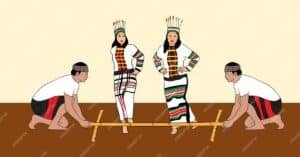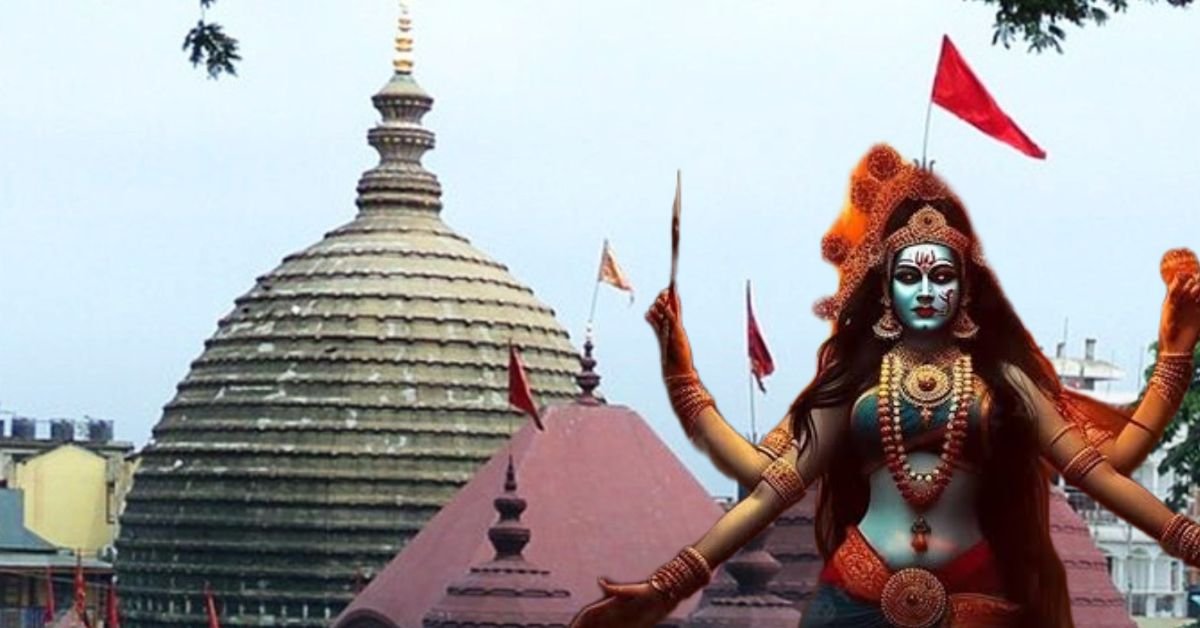The history of Assam can be divided into four eras: the ancient era (from 4th century AD to 11th century AD), the medieval era (from 11th century AD to 1826- Treaty of Yandaboo), the colonial era (1826 to 1947) and the post-colonial era (from 1947 onwards). In this blog, we will talk about the colonial era and freedom movement in Assam. Independence Movement in Assam was reaction to British occupation and exploitation. It started with treaty of Yandaboo (1826) when the British signed the treaty with Burma (Myanmar). Even though, Assam has lost many freedom fighters along the way, the independence movement of Assam generated a sense of nationalism and unity among the masses.
This blog is about independence movement of Assam, about those brave souls who laid down their lives in fighting British occupation and about those individuals who contributed to nation-building during phase (120 years).
Assam at the Start of British Occupation
In medieval Assam, the region was a formidable state governed by the Ahom dynasty in the east and the Koch dynasty in the west, along with other kingdoms such as Chutia, Kachari, and Jaintia. The Koch dynasty collapsed towards the end of the 17th century, while the Ahom dynasty served as the central force unifying Assam. However, following the death of Rudra Singha, the Moamoria Rebellion erupted (1769–1805), severely damaging Assam’s economy and fragmenting its unity. Ultimately, this led to the downfall of the Ahom dynasty, which never recovered.
During this period of turmoil, Ahom ministers sought the assistance of British soldiers to suppress the rebellion. Despite this, the Ahom dynasty was in a state of decline. The British support proved to be a temporary solution, and in 1821 AD, the Burmese (Myanmar) king attacked the Ahom kingdom. Assam experienced three Burmese invasions between 1817 and 1826, leading to Burmese control from 1821 to 1825. This occupation resulted in increased interactions between the Burmese and the British, culminating in the First Anglo-Burmese War and the Treaty of Yandabo in 1826. This treaty ended Burmese rule and initiated British governance in Assam.
First Independence Movement of Assam
After the treaty of Yandaboo, Assam entered into a new political and socio-economic phase. Initially, the British rule was welcomed by both the common people of Assam and the nobility of the Ahom Monarchy. The common people viewed the British as saviors after the menace of Burmese invasion and atrocities committed by the Burmese.
Soon the colonial juggernaut of British began to roll in Assam, exploiting the common people and depriving the nobility of Ahom dynasty. they gave more importance to the collection of taxes than the plight of common men and nobility. All these grudges against the british contributed to the first independence movement of Assam which became a part of pan-Indian phenomenon Sepoy Mutiny of 1857.
In Assam, however, the uprising differed from other parts of India. It was not led by soldiers or sepoys but by the Ahom nobility and aristocracy, with the support of the common people. During this period, the number of soldiers from Assam or Northeast India was limited or negligible, and those present were not in a position to revolt. Despite this, the Assamese people initiated their own uprising in 1857. Thus, the Sepoy Mutiny in Assam is also considered the first war of independence against the British, in line with the broader Indian context.
Sepoy Mutiny in Assam (1857)
When we think of Sepoy Mutiny in Assam, the names of two people come to our mind. Maniram Dewan and Piyali Baruah. The Chief planner of the revolt was Maniram Dewan but it was Piyali Baruah who brought the plan to action.
Maniram Dewan (17 April 1806 – 26 February 1858) initially served as a loyal ally of the British East India Company, helping to establish various tea gardens with their assistance. He earned a substantial salary as an employee of the Company. However, in the mid-1840s, due to differences of opinion with Company officials, he resigned and went on to create his own tea garden at Cinnamara in Jorhat.
By the 1850s, Maniram faced significant administrative obstacles and opposition from European tea planters. His hostility towards the British grew when Captain Charles Holroyd seized his tea plantation facilities in 1851, causing economic hardship for his family.
A devoted patriot, Maniram wrote numerous petitions to the judge of the Sadar Court in Calcutta, demanding the restoration of the Ahom monarchy. He also wrote against unjust taxation, the unfair pension system, and the introduction of opium cultivation, but his pleas were ignored by the British, prompting him to take the drastic step of rebellion.
When the Indian sepoys began their uprising against the British on 10 May 1857, Maniram seized the opportunity to restore Ahom rule. He sent coded letters to Piyali Baruah through messengers disguised as fakirs, urging Kandarpeswar Singha to rebel with the help of sepoys at Dibrugarh and Golaghat. The plan, supported by several influential local leaders, aimed to march to Jorhat, install Kandarpeswar as King during Durga Puja, and subsequently capture Sibsagar and Dibrugarh.
The Assamese workers of the Assam (Tea) Company struck in support of the rebels. However, the plan was foiled when the letter fell into the hands of British agents, leading to the arrest of the leaders and the collapse of the revolt in Assam.
Kandarpeswar Singha was apprehended in Jorhat, and Maniram Dewan, along with Piyali Baruah, was publicly hanged on 26 February 1858 at the Jorhat Central Jail. Thus the first independence movement of Assam or the sepoy mutiny in Assam ended without causing much damage to the British empire in Assam.
Sepoy Mutiny in Barak Valley of Assam
Barak valley (erstwhile East Bengal) too were affected by the Revolt. When news of the mutiny at Meerut (1957) reached Chittagong in November that year, three hundred sepoys of the 34th Native Infantry posted in the port town mutinied. From Sylhet they entered Cachar where the Sylhet Light Infantry confronted them. At Latu (Karimganj district of Assam) a battle took place. The mutineers (around 200 in numbers) were able to get the support of a number of Manipuri princes. However, 185 of the mutineers were killed by the end of 1858. The remnant of the mutineers dispersed.
Peasant Uprising Against British
After the 1857 revolt, there were scattered uprisings, primarily local and peasant-focused. At that phase of Assam history, colonialism was deeply rooted, and the expanding tea, oil, and coal-mining industries exerted growing pressure on the agricultural sector, which was struggling to keep up. Faced with the burden of the opium monopoly and exploitation by moneylenders, the peasants revolted once more. Numerous raiz mels (peasant assemblies) resolved to refuse tax payments.
These revolts lacked developed political consciousness and were more akin to peasant rebellions than a cohesive movement for independence.
Phulaguri Uprising
The Phulaguri Uprising (also Phulaguri Dhawa/Dhewa) was an agrarian uprising in Phulaguri village of Nagaon district of Assam. The immediate cause of the Phulaguri uprising of 1861 AD was the exorbitant taxes imposed by the British administration on the farmers of Assam.
In the early phase of British rule, the East India Company launched extensive tea plantation projects, which required a large labor force. Migrant labor from Bengal proved insufficient, and the wealthy Assamese farmers were unwilling to work in the tea gardens under Company conditions. To compel local farmers to seek employment on the tea estates, the tea planters decided to impoverish them by increasing the tax burden.
The oppressive regime of the British had dissatisfied the common people as well as the erstwhile ethnic rulers of the region. Both the common people and the erstwhile rulers of Assam came together and started planning to overthrow the British regime. It was said that the British could be easily overthrown as their military strength was numerically very limited. There were only 25 sepoys in Nagaon at that time.
Under Regular armed training started in the paddy fields of the interior areas. People started equipping themselves with traditional arms like spears, bows etc.
When Sconce (Deputy Commissioner of Nagaon at that time) heard of the raijmel (villagers’ meeting) on 16 October 1861, he sent a police force to arrest the organizing leaders. The villagers refused to disperse and instead forced the police to retreat. Next day, Lieut G B Singer, Assistant Commissioner in Nowgong, with 20 more policemen went to the protest site. The angry peasants killed the Assistant Commissioner.
To suppress the movement and set an example, the British Light Infantry opened fire on unarmed crowds on 26 October 1861, killing 39 farmers immediately, with 15 more dying from their injuries later. Additionally, 141 farmers from Phulaguri and surrounding areas were imprisoned. Lakshman Singh Deka, Sangbar Lalung, and Rangbar Deka were executed in Nowgong for their alleged involvement in Singer’s murder.
It was the first ever peasant movement in the context of Indian freedom movement, which took place much before the Champaran movement took place under the leadership of Mahatma Gandhi.
Patharughat Uprising
Patharughat (also known as Patharighat), a small town in Assam’s Darrang district, witnessed a protest similar to the Phulaguri uprising, driven by exorbitant tax collection under British rule. The protest began in late December 1893, with farmers refusing to pay taxes. On 28 January 1894, British authorities intervened at the protest site, using lathicharges and opening fire. Unofficial records indicate that at least 150 Assamese were killed in the firing. This incident is often referred to as Assam’s Jallianwala Bagh.
This incident gave a new direction to India’s freedom movement. The deaths of several innocent farmers made the cause of freedom struggle against the British stronger.
Meanwhile, in 1874, Assam was separated from the Bengal Presidency and elevated to the status of a Chief Commissioner’s Province, with Sylhet added to it and Shillong designated as the capital. During the Partition of Bengal in 1905, Assam was incorporated into East Bengal, causing significant dissatisfaction among local leaders and the populace. Independence Movement in Assam really began from this stage in its true sense of the term.
Anti-Partition and Swadeshi Movement in Assam
The 1905 Partition of Bengal caused widespread indignation across India, with Assam particularly affected by being merged with the districts of Eastern Bengal. In 1874, Assam’s separation was intended to allow focused governance and improvement. However, the merger with Bengal’s advanced districts threatened to undo these gains. The Assamese people’s desire to preserve their distinct identity led them to join the anti-partition movement.











